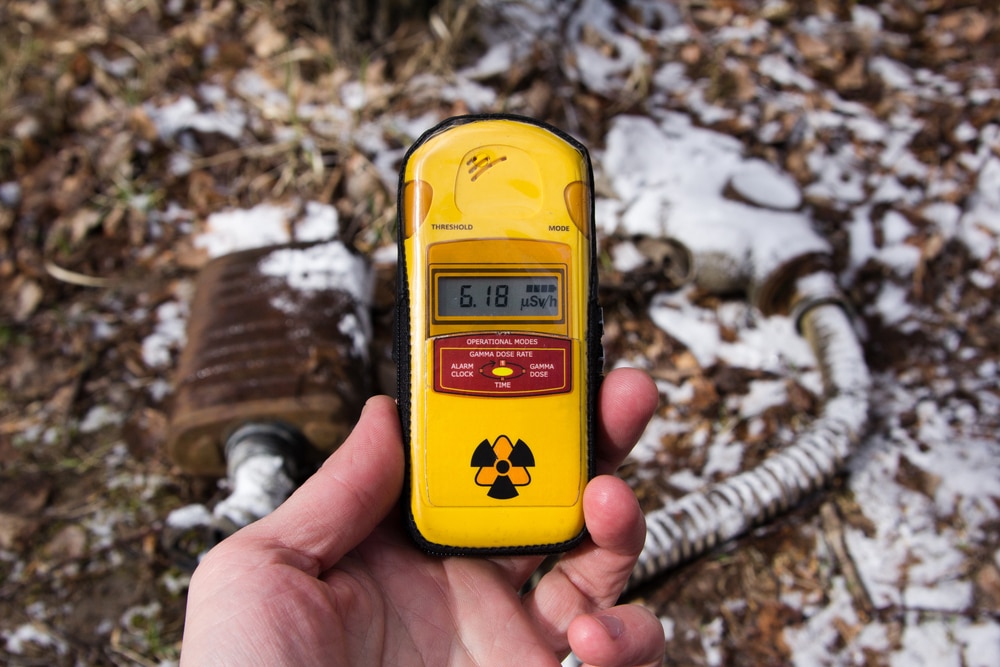Traces of radioactive Cesium-137 have been measured along Norway’s border with Russia, it was revealed today.
The radiation levels are ‘clearly’ higher than normal, authorities have said, and the cause of the mysterious spike is unknown.
One fear is that it could relate to Russia’s Pankovo test site for the Burevestnik – a nuclear-powered, nuclear-armed cruise missile – on the Novaya Zemlya archipelago.
The experimental weapon, known as Vladimir Putin’s ‘Flying Chernobyl’, is intended to be capable of remaining in the air for days or even weeks as it probes weaknesses in Western defences.
However, there may be other reasons for the radioactive spike, reports the Barents Observer.
The Norwegian Radiation and Nuclear Safety Authority (DSA) confirmed the levels are above the norm but remain ‘very low’.
‘The levels are clearly higher than normal, but pose no risk to humans or the environment,’ said Bredo Møller, of the DSA’s Emergency Preparedness unit at Svanhovd.
The radioactive Cesium-137 appeared between September 9 and 12.
Norway shares a 121 mile border inside the Arctic Circle with Russia’s highly militarised Murmansk region.
The media outlet highlighted that there has been top secret activity at the Burevestnik test site in recent weeks.
‘There are no official reports that the Burevestnik is tested, but indications can be seen by studying daily updated satellite images from the Arctic archipelago.
‘The Barents Observer has in the course of the summer seen several cargo-ships and special purpose vessels in the waters outside Pankovo and over the last few weeks, Rosatom’s two large Il-76 transport planes have periodically been parked at the airport in Rogachevo at Novaya Zemlya.
‘The blue-coloured aircraft are believed to conduct operations connected to the Burevestnik testings.’
Yet there are also ‘a few nuclear-powered icebreakers’ moored around Murmansk, Putin’s Arctic capital, and numerous maritime reactors onboard submarines in the region, home of Russia’s Northern Fleet.
Filters from Viksjøfjell and Svanhovd in Norway – close to the Russian border – are analysed once a week.
The amount of Cesium so far ‘poses no risk for humans or the environment.’
The Observer reported that ‘it is unlikely that such releases are coming from a naval reactor in operation at sea.
‘Small leakages of Cesium-137 are more likely to appear during start-up or maintenance of a reactor or from handling spent nuclear fuel.’
More than a dozen tests of Burevestnik are deemed to have failed.
A 2019 test led to the deaths of seven people who attempted to salvage the crashed top secret missile.
Putin dubbed them ‘national heroes’ without explaining details of their deaths.
The Burevestnik is viewed by the Russian dictator as a game-changing ‘doomsday’ weapon with an unlimited range.
It is seen by the Kremlin as a low-flying ‘stealth’ cruise missile incapable of interception by existing Western air defences and delivering nuclear warheads anywhere around the globe.
Putin has called it ‘a radically new type of weaponry’ with ‘unlimited range and unlimited ability to manoeuvre’.
A report by the Nuclear Threat Initiative – a nonprofit arms control group – said Russia had conducted 13 known tests between 2017 and 2019, all of which were unsuccessful.
Putin went public with the weapon in 2018, one of five game changing missile systems he claimed were superior to Western models.
The Moscow Times said the Burevestnik had been nicknamed the ‘Flying Chernobyl’.
‘Previous launch attempts ended unsuccessfully,’ said the news outlet.










